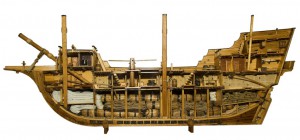 When working on a family history, we like to include historic images and photos of places and events as well as photos from family collections. More and more, we’re using both Google and Bing image searches to kick-start our efforts. More and more, I’m coming to prefer Bing. Continue reading Historic Image Search: Google vs. Bing
When working on a family history, we like to include historic images and photos of places and events as well as photos from family collections. More and more, we’re using both Google and Bing image searches to kick-start our efforts. More and more, I’m coming to prefer Bing. Continue reading Historic Image Search: Google vs. Bing
Category Archives: Research Methods
Home from RootsTech 2014
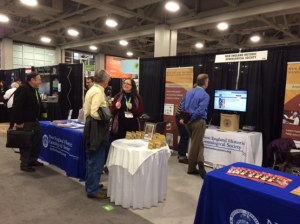 After a whirlwind time in Salt Lake City for RootsTech 2014, the NEHGS web team is back in Boston. This year’s conference felt like a big step up from last year’s (moving into the larger half of the Salt Palace) without seeming overwhelming, although I personally didn’t get the chance to visit as many booths as I would have liked. The fact of the matter is that I was too busy talking to the visitors at our booth. Continue reading Home from RootsTech 2014
After a whirlwind time in Salt Lake City for RootsTech 2014, the NEHGS web team is back in Boston. This year’s conference felt like a big step up from last year’s (moving into the larger half of the Salt Palace) without seeming overwhelming, although I personally didn’t get the chance to visit as many booths as I would have liked. The fact of the matter is that I was too busy talking to the visitors at our booth. Continue reading Home from RootsTech 2014
Something else inventories can tell us
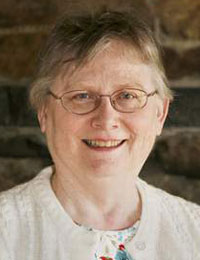 My winter social schedule was enlivened recently with a talk given by one of my favorite speakers, Peg Baker of Plymouth. She and her husband, Jim Baker, are well known for their vast expertise in all things Pilgrim. Peg is Director Emeritus of The Pilgrim Society in Plymouth and compiler of the just released and completely revised edition of Mayflower Families Through Five Generations on Pilgrim Thomas Rogers, published by the General Society of Mayflower Descendants. Continue reading Something else inventories can tell us
My winter social schedule was enlivened recently with a talk given by one of my favorite speakers, Peg Baker of Plymouth. She and her husband, Jim Baker, are well known for their vast expertise in all things Pilgrim. Peg is Director Emeritus of The Pilgrim Society in Plymouth and compiler of the just released and completely revised edition of Mayflower Families Through Five Generations on Pilgrim Thomas Rogers, published by the General Society of Mayflower Descendants. Continue reading Something else inventories can tell us
A triumph of genealogical scholarship
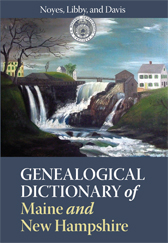 For more than seventy years the Genealogical Dictionary of Maine and New Hampshire – compiled by Charles Thornton Libby, Walter Goodwin Davis, and Sybil Noyes, and published between 1928 and 1938 – has been the first recourse for those looking to trace their seventeenth-century northern New England ancestry. It is one of a handful of titles in the genealogical field that has never been out of print for very long. Continue reading A triumph of genealogical scholarship
For more than seventy years the Genealogical Dictionary of Maine and New Hampshire – compiled by Charles Thornton Libby, Walter Goodwin Davis, and Sybil Noyes, and published between 1928 and 1938 – has been the first recourse for those looking to trace their seventeenth-century northern New England ancestry. It is one of a handful of titles in the genealogical field that has never been out of print for very long. Continue reading A triumph of genealogical scholarship
English port lists of the 1630s
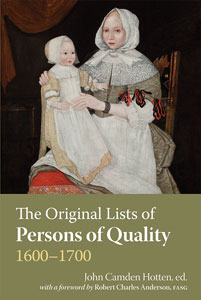 John Camden Hotten first published The Original Lists of Persons of Quality – his compilation of documents relating to seventeenth-century migration to New England, the Chesapeake, and the Caribbean – more than a century and a quarter ago, and it remains one of our most valuable and accurate sources for that period. He included in the volume the surviving records from the London Port Books, along with lists from some of the English outports. In addition, he included some muster rolls from Virginia, and other items listing early settlers there. Continue reading English port lists of the 1630s
John Camden Hotten first published The Original Lists of Persons of Quality – his compilation of documents relating to seventeenth-century migration to New England, the Chesapeake, and the Caribbean – more than a century and a quarter ago, and it remains one of our most valuable and accurate sources for that period. He included in the volume the surviving records from the London Port Books, along with lists from some of the English outports. In addition, he included some muster rolls from Virginia, and other items listing early settlers there. Continue reading English port lists of the 1630s
Mourning rings as genealogical clues
 What to us might seem a rather morbid seventeenth-century tradition was the bestowal of mourning gifts on those who took part in your funeral, such as the coffin bearers, as well as family and friends. Samuel Sewall made a list of thirty funerals at which he was a “bearer” between 1697 and 1704, noting what he received for each service, which totaled twenty-four scarves, five pairs of gloves, and fourteen rings. (For the funeral of Thomas Broughton he got nothing.) By 1725, he had fifty-seven rings. Continue reading Mourning rings as genealogical clues
What to us might seem a rather morbid seventeenth-century tradition was the bestowal of mourning gifts on those who took part in your funeral, such as the coffin bearers, as well as family and friends. Samuel Sewall made a list of thirty funerals at which he was a “bearer” between 1697 and 1704, noting what he received for each service, which totaled twenty-four scarves, five pairs of gloves, and fourteen rings. (For the funeral of Thomas Broughton he got nothing.) By 1725, he had fifty-seven rings. Continue reading Mourning rings as genealogical clues
The Well-Stocked Genealogical Library
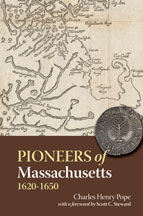 To be complete, the well-stocked genealogical library should include general works on our research interests. Biographical dictionaries and other compendia are useful for looking at our ancestors’ contemporaries and their activities; they often provide clues for specific queries when the record in any one case is lacking, sending us off to an overlooked source or locality where the trail seemed cold. Continue reading The Well-Stocked Genealogical Library
To be complete, the well-stocked genealogical library should include general works on our research interests. Biographical dictionaries and other compendia are useful for looking at our ancestors’ contemporaries and their activities; they often provide clues for specific queries when the record in any one case is lacking, sending us off to an overlooked source or locality where the trail seemed cold. Continue reading The Well-Stocked Genealogical Library
Beasts, Bees, and Indian Corn
 Probate inventories can tell us a lot about the living conditions of our ancestors, but as they are usually difficult to read and interpret, more often than not the little details are skipped by family historians. Nearly everyone records the amount of land in the inventory, but that rarely tells us much about how good the land was, nor how good the farmer was. Because I’m an old aggie student (University of Connecticut 1969), I like to look at the inventories of livestock and crops to learn more about the farms and their owners. Continue reading Beasts, Bees, and Indian Corn
Probate inventories can tell us a lot about the living conditions of our ancestors, but as they are usually difficult to read and interpret, more often than not the little details are skipped by family historians. Nearly everyone records the amount of land in the inventory, but that rarely tells us much about how good the land was, nor how good the farmer was. Because I’m an old aggie student (University of Connecticut 1969), I like to look at the inventories of livestock and crops to learn more about the farms and their owners. Continue reading Beasts, Bees, and Indian Corn
What you know (and can prove)
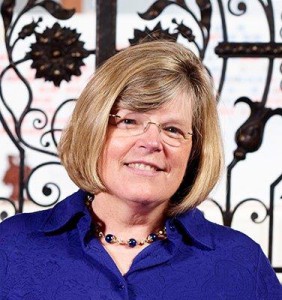 “Write down what you know” is the first step in family history research. For many of us, what we know includes family stories that have been passed down from generation to generation. But sometimes those stories can be misleading – or just plain incorrect. For example, my stepmother had always heard that she was related to Ralph Waldo Emerson and General William Tecumseh Sherman. I have a set of notes written by her aunt, Minerva McGee (1897-1972), which begin like this:
“Write down what you know” is the first step in family history research. For many of us, what we know includes family stories that have been passed down from generation to generation. But sometimes those stories can be misleading – or just plain incorrect. For example, my stepmother had always heard that she was related to Ralph Waldo Emerson and General William Tecumseh Sherman. I have a set of notes written by her aunt, Minerva McGee (1897-1972), which begin like this:
General Sherman — younger brother of Catherine Sherman
Ralph Waldo Emerson — younger brother of John Emerson
John Emerson — Catherine Sherman, My Great Grandparents.
Unfortunately, Aunt Minerva was wrong. Continue reading What you know (and can prove)
Social media for genealogists
 At the moment, I am working on three different family histories, two of them for families in Boston, and one for a New York Dutch clan.
At the moment, I am working on three different family histories, two of them for families in Boston, and one for a New York Dutch clan.
As part of the research process, each of these family histories will, at some point, generate a questionnaire for modern-day family members. With each book project, the question arises: How best to encourage family members to fill out yet another form, in this case running to several pages? Continue reading Social media for genealogists